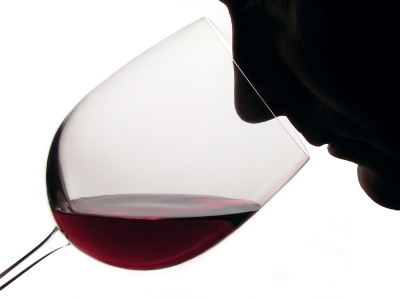Wine Tasting Trickery

Wine and coffee seem to be common topics here at Neuromarketing. Perhaps it’s because I enjoy both, but also because each of these beverages comes in an infinite variety of flavors and is available in varied methods of delivery. We’ve learned that the coffee sensory experience is greatly influenced by the coffee shop environment and that wine thought to be from California has a more positive influence on diners than the same wine attributed to North Dakota. Of the two products, wine tasting seems even more subjective – magazines and bloggers alike publish detailed tasting notes on wines ranging in cost from $2 to $200 (or more) per bottle, and often reach quite different conclusions. Some of the research on wine tasting has big implications for marketers, because it shows how often consumer perceptions of a product are influenced by factors other than the product itself.
One of the most often cited examples of wine tasting gone awry is an experiment described by the New Yorker:
Studies suggest that the experience of smelling and tasting wine is extremely susceptible to interference from the cognitive parts of the brain. Several years ago, Frederic Brochet, a Ph.D. student in oenology at the University of Bordeaux, did a study in which he served fifty-seven participants a midrange red Bordeaux from a bottle with a label indicating that it was a modest vin de table. A week later, he served the same wine to the same subjects but this time poured from a bottle indicating that the wine was a grand cru. Whereas the tasters found the wine from the first bottle “simple,” “unbalanced,” and “weak,” they found the wine from the second “complex,” “balanced,” and “full.” Brochet argues that our “perceptive expectation” arising from the label often governs our experience of a wine, overriding our actual sensory response to whatever is in the bottle.
An article by Jordan Ross of Enology International, Non-Sensory Factors and The Psychology of Quality, explores in great detail the non-sensory factors which can influence the perception of a wine.
How we respond to a wine is strongly influenced by its context, the term experimental psychologists use to refer to the setting in which we taste a wine. Context is not only the physical surroundings but includes all other stimuli present such as the label, vintage, price, grape variety, ratings, reputation and cork or screw cap. Changes in context (such as tasting a Bordeaux Superior after it’s poured into a bottle labeled Chateau Petrus) do not change the wine’s flavor but will alter how the wine is perceived, what we look for, what we find and therefore how much we like it and even the words we use to describe the wine. The importance of these contextual cues can be readily seen when they are removed, such as in a blind tasting so that only the wine’s sensory characteristics are being evaluated. At times, the emperor has no clothes!
While novices are more likely to be led astray by factors related to context, there are numerous other non-sensory cues, which can influence experts. For example reputation, price and scarcity can have an enormous impact on perceived quality because they activate information stored in memory from prior experience. Which is why in blind tastings lesser-known or less expensive wines frequently beat out cult wines.
Ross’s article is long and interesting. He notes that the wine’s label information plays a big role in how the brain interprets the sensory information because the taster is subconsciously using past experience with that grape varietal, the winery, or with wines termed “old vines” or “limited production.” Similarly, a wine poured from a screw cap bottle may produce different reactions than the same wine poured from a bottle sealed with a cork.
None of this is news to wine marketers, who try to position their wine with clever labels, put their own tasting notes on the label, and often cite gold medals or high ratings. But why do the rest of us care?
Most of the products we buy aren’t as fussy as wines, but we still depend on our brains to decide whether we like it. And those decisions depend on both sensory input from the product as well as a host of other information that we already have stored about the product. While products like Coca Cola come to mind, it’s not just consumables. Is a mesh office chair more comfortable and attractive if we know it’s an Aeron from Herman Miller and not a cheap knockoff? Would a large, boxy car convey a greater sense of elegance if we knew it was the latest model from Rolls Royce and not an attempt to revive Checker Cab?
Just like tasting wine, viewing products is not usually a “blind” process – we bring to bear everything we know about similar products, the brand, the context in which we see it, our past experience with the product, and so on. Hence, marketers and product developers need to focus not just on developing a product with great functionality – food items that taste good, cars that run well, furniture that is comfortable, and so on – but on every aspect of the customer experience. The packaging, the retail environment, the brand reputation, and so on will all influence whether the customer thinks the product is of high quality and/or meets his needs.
In short, Brochet’s “perceptive expectation” applies to much more than wine!
